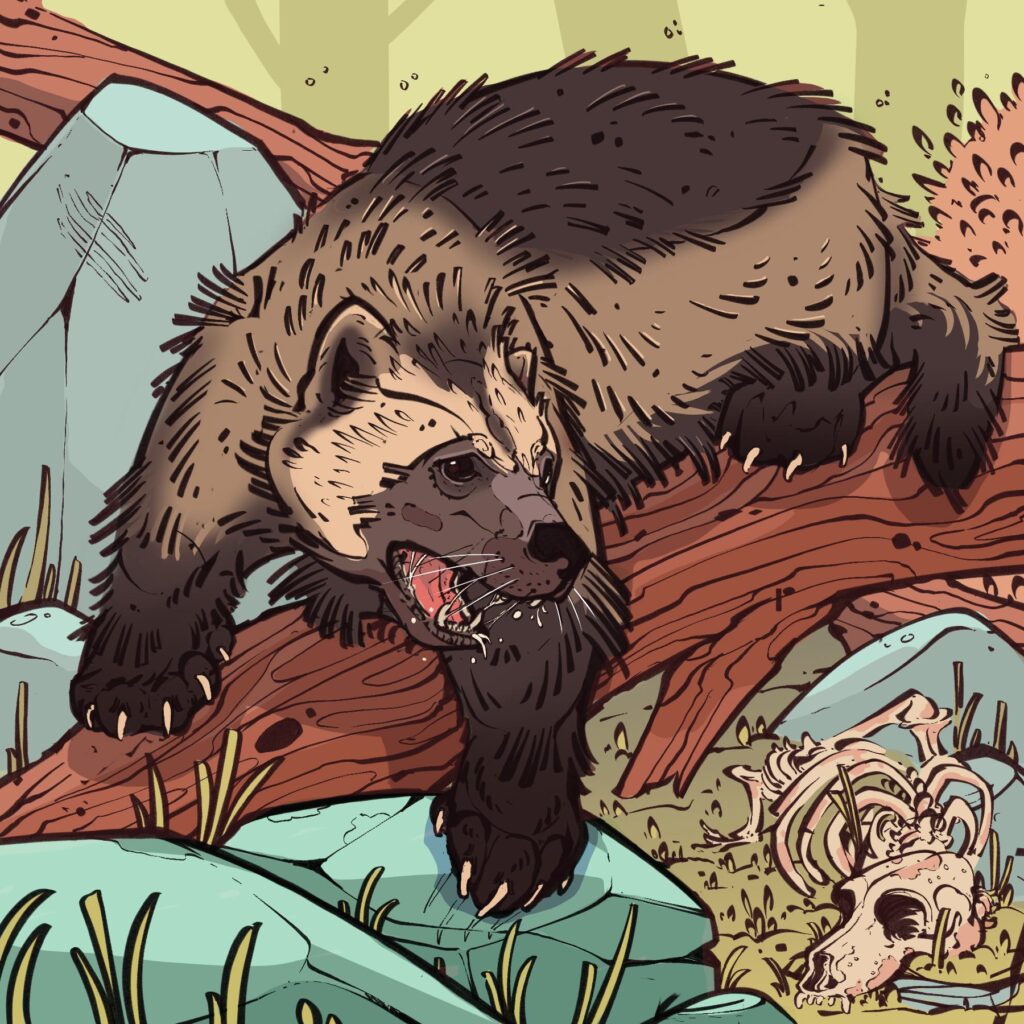Quite a while ago, when I was in Boy Scouts, my small team took the name Wolverine Patrol. As 12-year-olds, we liked that those animals were known to be tough and, of course, we liked the nickname “skunk bears.” Jump ahead to today and Wolverine is one of a huge number of comic book superheroes. The creators of Wolverine apparently admired the characteristics of the real animal as much as we scouts did, but few of us have actually met a wolverine in the wild.
The range of wolverines includes remote highlands and deep forests across northern Europe, Asia and North America. They prefer cool habitats, such as sub-alpine forests, alpine tundra and the boreal forest. At one time, they were found throughout BC, but they are now rare in the southern third of this province.

Wolverines are the largest fully terrestrial members of the weasel (Mustelidae) family (some aquatic otters are bigger.) A mature male weighs 12 to 18 kilograms and a female is about two thirds that weight. They resemble a small bear, with short, powerful legs and a medium length tail. Their long, thick fur is mainly dark brown. Most have wide, pale stripes on both sides of their body that extend onto the tail. Some also have patches of white fur on their chest. Their fur is hydrophobic (repels water) and in the north has long been used for the trim on parkas because it resists the accumulation of frost.
These animals do not have exceptional hearing or sight, but they do have a well-developed sense of smell. They use scent marking from very potent musk glands to communicate with others and establish territorial boundaries. They are related to skunks and so, unfortunately, you will know if a wolverine has marked your backwoods cabin – the scent lingers long after they have gone.
Wolverines have a reputation for being voracious, almost insatiable eaters. In fact, the scientific name (Gulo gulo) translates from Latin as “glutton glutton,” as does their name in several northern European languages. However, to support a very active lifestyle where they routinely travel huge distances over steep, rugged terrain, and remain active all winter, wolverines do need to eat a lot. They are undiscriminating carnivores, dining on porcupines, hares, small mammals and birds, as well as trapline baits. But up to 50 per cent of their diet is carrion, from animals that died naturally or leftovers from kills by predators like wolves, bears or cougars. Reports of single wolverines overpowering those other predators to claim a kill are likely exaggerated, but they are remarkably strong for their size. Armed with long, sharp claws and a powerful bite, a wolverine can take down a deer, mountain goat, caribou or even a moose. Very strong jaw muscles, along with teeth suitable for ripping flesh, are useful when chewing on frozen meat and cracking bones.
Summer is mating time for wolverines. A dominant male is polygamous and will form a lifetime bond with several females within his huge home range. After mating, a pregnant female is actually “only a little bit pregnant” through a process called delayed implantation. In her womb, egg and sperm meet and develop into a small embryo called a blastocyst, but which then stops growing for several months. By winter, if the female is fat and healthy, the embryo implants in the uterus and continues to develop. However, if she is in poor health or undernourished, the pregnancy goes no further. In this way, her body is saved the demands of a new family when she is ill prepared, and she will be ready to try again next summer.
Wolverine kits grow quickly: born in spring, weaned by mid-summer and full grown by their first birthday. If they survive the first year, they may live 10 years in the wild. Wolves prey on adult wolverines, while youngsters may be killed by bears, cougars and occasionally by golden eagles. However, we humans take the highest toll. Wolverine pelts are sought after by trappers and, where there is a season, also by hunters. The annual harvest in BC is about 165 of these animals from an estimated provincial population of 3,500.
So, a wolverine looks like a bear and smells like a skunk, hence a “skunk bear.” But, in addition to the commercial value of the fur, this animal is also a potential role model for us humans. Descriptive terms like feisty, tenacious and with great endurance are admirable qualities in a superhero, and a Boy Scout.

